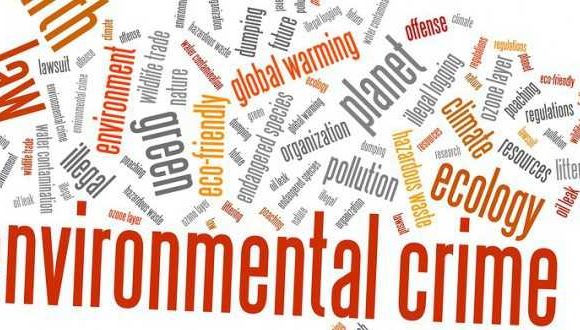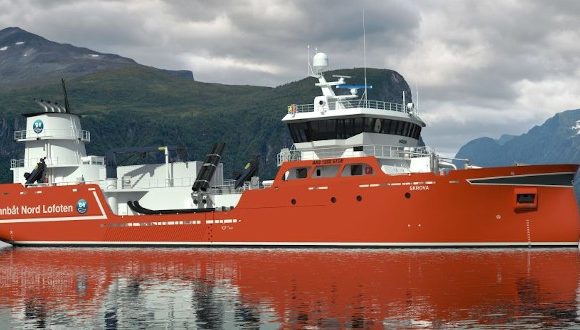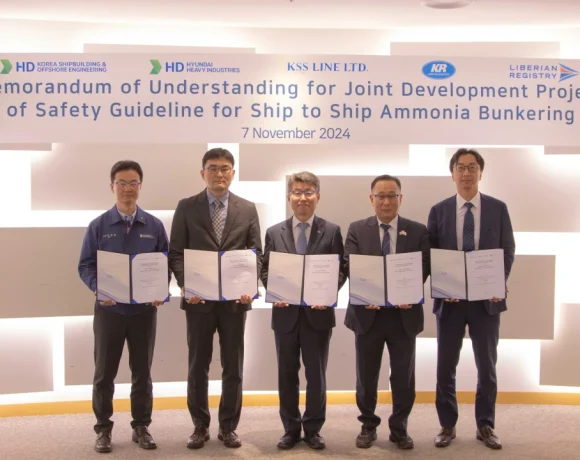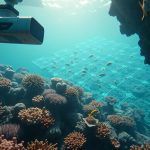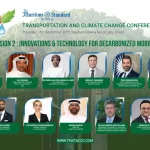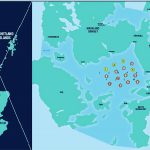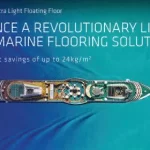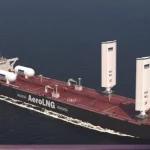Marine Ecology News Digest January 2025
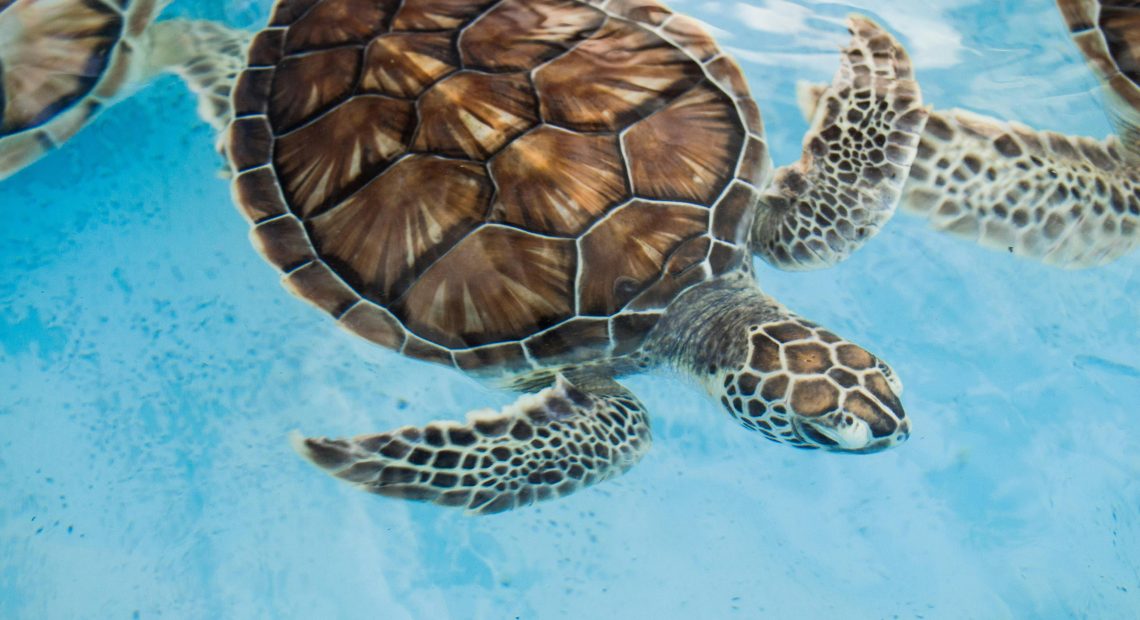
Ever thought about how tiny sea creatures could help us understand our planet’s future? This idea is at the heart of the exciting research in our latest digest.
Welcome to our Marine Ecology News Digest! This edition takes you on a journey from tiny studies to big ocean habitats. We look at how engineers tackle biofouling and how climate change affects fish populations worldwide.
Our team has picked the most significant developments in aquatic science and conservation from across the globe. This collection brings together key research, policy updates, and conservation efforts from recent weeks.
This year, we’re diving into the challenges of managing ocean ecosystems. This resource is for experts, researchers, and leaders who want to stay up-to-date. We highlight new tech that’s changing how we see the sea and offer practical tips for saving our oceans.
Let’s explore how community projects are making us all more aware of our oceans. They’re helping us appreciate the beauty of our blue planet.
Current Trends in Marine Biodiversity
The start of 2025 has seen big changes in where marine life lives, thanks to last year’s heat. Even though El Niño has weakened, the oceans are hotter than ever. Scientists are worried if these changes are part of normal warming or if they’re a sign of something worse.
Our study shows that where marine animals live is changing fast. This is affecting many levels of life in the sea. It’s making it harder to protect marine life and manage resources.
Influence of Climate Change on Marine Species
Marine biologists have seen unprecedented migration patterns in pelagic species. Tropical fish are now in temperate waters, upsetting the balance of marine life. This shows how climate change is changing marine ecosystems quickly.
The effects on food webs are getting worse. This is worrying for species that keep the ecosystem in balance. If these species are affected, it can change the whole marine community.
Research in January 2025 shows that marine species adapt at different rates. This leads to new relationships and vulnerabilities in the ocean. Some species are very resilient, while others struggle to adapt to the fast changes.
These differences are seen in many marine groups:
- Reef-building corals show different bleaching responses
- Planktonic communities change composition
- Predatory fish change their hunting areas and methods
- Filter-feeding organisms adjust to new nutrient levels
The changes in biodiversity are affecting how we manage fisheries. Old catch limits and seasonal rules might not work anymore. Marine protected areas need to be updated to reflect where species now live.
How we choose which species to protect is also changing. It’s now harder to decide whether to focus on vulnerable species or on keeping ecosystems healthy. Climate change is making this choice more complex.
As we move through 2025, scientists are watching these changes closely. The data will help us develop new ways to manage marine ecosystems under climate change.
Current Trends in Marine Biodiversity
Early 2025 has brought new insights into coral reefs. These discoveries are vital as marine life faces threats from climate change and human actions. Scientists are working hard to understand these ecosystems, which could help in saving them.
Recent Discoveries in Coral Reef Ecosystems
January’s research found new relationships between corals and microorganisms. These partnerships help corals fight off heat stress. Scientists found certain bacteria that could protect corals from bleaching, which is a big hope.
Genetic studies have changed how we see reef connections. Teams have found links between coral communities that were thought to be separate. This changes how we plan to protect marine areas.
Deep coral communities, found between 30-150 metres, are thriving. They are resistant to bleaching, unlike shallow reefs. Australia’s Great Barrier Reef has had five mass bleaching events in eight years, but these deep reefs are healthy.
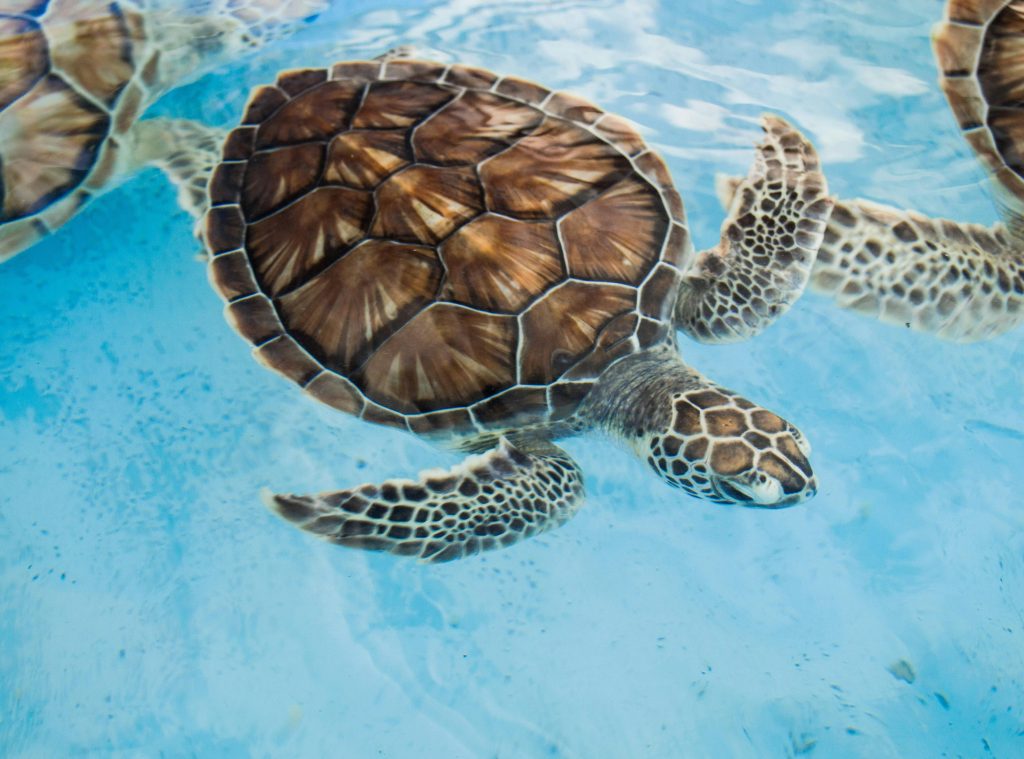
Exploring these deep reefs is now possible thanks to new technology. Submersibles and advanced cameras let researchers study these areas in detail. These reefs could be key for reef recovery, but they face challenges like ocean acidification.
Weather experts say warmer temperatures could lead to a longer, more active hurricane season. This is a big threat to already stressed coastal ecosystems. The mix of weather and marine life is a complex issue that needs a unified approach.
These new findings are changing how we protect marine life. The resilience of some corals offers hope for restoration. Also, the connections between reefs show the need for large-scale protection, not just small areas.
Advances in Marine Conservation Efforts
This January, coastal nations have introduced new conservation policies. These changes offer hope for endangered marine species. The first month of 2025 has seen major policy updates that strengthen protection and use new methods to save marine life. These steps mark a big change in how we protect the ocean worldwide.
New Policies for Protecting Endangered Species
The United Kingdom has led by expanding its Marine Wildlife Conservation Zones. These new zones protect species like the flapper skate and angel shark, whose numbers have dropped a lot. The rules now include stricter enforcement and bigger no-fishing areas around key habitats.
These policies are effective because they focus on whole ecosystems, not just single species. They consider how species interact and what they need to survive. This way, they help keep the ocean’s biodiversity healthy by protecting entire ecosystems.
Many coastal countries have introduced new rules that go beyond old methods. They use advanced tools like underwater robots and DNA sampling to track endangered species. This helps them make conservation plans that really work.
It’s also great to see Indigenous knowledge being used in conservation. This mix of old wisdom and new science makes protection plans better and more respectful. It’s very helpful in areas where local communities have always lived in harmony with the sea.
The Scottish way of having local communities manage no-take zones is a great example. These areas, run by the people who live nearby, have seen scallops and lobsters grow. This shows that good protection plans can work and keep people happy.
These models are inspiring other places to work together on conservation. When local people help make and enforce rules, it works better. Scotland’s success is being followed by others around the world.
But, there are challenges, like in places where it’s hard to enforce rules. Many countries find it tough to watch over their oceans. They need help from others to protect their marine life.
These new policies are a big step forward for marine species. By using old wisdom and new science, and working together, we’re entering a new era of ocean protection.
Advances in Marine Conservation Efforts
Coastal communities are leading the way in ocean conservation. They are showing that local efforts can be more effective than big plans from above. These efforts use local knowledge and community support for long-term success.
Community-Led Initiatives in Coastal Areas
In early 2025, community engagement in ocean conservation is more powerful than ever. Local groups are finding new ways to protect the sea while using its resources wisely. These ideas can be used all over the world.
In Scotland, a community-run no-take zone is a huge success. Scallop populations and lobster sizes have grown a lot in the protected area. This success is even helping fishing outside the zone.

In Southeast Asia, coastal communities have also made big strides. They’ve set up marine protected areas that cut down on illegal fishing. This helps both the sea and the people living nearby.
- Sustainable tourism operations that generate alternative income
- Carefully regulated harvest zones based on scientific monitoring
- Community enforcement systems that ensure compliance
- Educational programmes that build conservation awareness
- Collaborative decision-making processes that ensure equitable resource access
Citizen science programmes are also growing in these communities. They let locals help collect important data. This includes tracking coral health and fish numbers.
When people help collect data, they care more about protecting the sea. This leads to better following of rules and creative solutions to problems.
Combining traditional knowledge with science is a big step forward. Indigenous and local knowledge systems have deep insights into the sea. Mixing this with science gives a fuller picture of coastal ecosystems.
This mix of knowledge helps communities set the right catch limits and plan fishing seasons. This way, they manage the sea in a way that works for everyone.
These community-led efforts are setting a good example for ocean conservation everywhere. They show that protecting the sea is about working together, not just saying no to everything.
Advances in Marine Conservation Efforts
In 2025, new technologies are changing how we protect the ocean. These tools help us watch over and fix marine life better than before. They are big steps forward in saving our seas.
Groups working to save the ocean are using smart systems. These systems can spot changes in the sea with great detail. This is very helpful in places that are hard to reach.
Impact of Technology on Conservation Measures
Satellites are now tracking illegal fishing with new levels of precision. Countries are using this info to stop fishing in protected areas. This has cut down on illegal fishing a lot.
Environmental DNA (eDNA) sampling is getting easier to use. It lets scientists find out what species are in an area without seeing them. This is great for finding rare sea creatures.
Teams can now quickly check how many species are in a place without harming the sea. This helps us understand the sea better than before. It’s a big help in keeping the sea healthy.
Autonomous underwater vehicles (AUVs) are also making a big difference. They can:
- Map coral reefs with centimetre-level precision
- Monitor restoration projects over extended periods
- Collect multi-parameter environmental data in real-time
- Capture high-resolution imagery of seafloor habitats
- Operate for weeks without human intervention
These robots can work for a long time, giving us important data. They help us watch over places in the sea that are hard for people to see.
These tools are being used by local groups to help protect the sea. This makes it easier for communities to help save their oceans. In the UK and other places, fishermen are using apps to report changes in the sea.
By combining local knowledge with new tech, we’re finding better ways to manage the sea. This mix of old and new ideas helps us protect the sea while also letting people use it. As we move through 2025, these new tools give us hope for a healthier ocean.
Updates on Oceanic Research Expeditions
At the start of 2025, big steps forward in deep-sea tech have opened up new areas for study. The Marine Ecology News Digest January 2025 shows how these new tools are changing ocean research. They’re helping to protect our oceans around the world.
Big ships are now exploring the deep with the latest tech. This tech helps them face the harsh conditions of the deep sea. It’s a big help for learning about our oceans.
These advances come at a good time. The world is worried about the health of our oceans. Scientists can now study areas that were hard to reach before. This helps them find ways to protect our oceans better.
Innovations in Deep-Sea Exploration
In January 2025, new underwater vehicles were launched. They can dive as deep as 11,000 metres. These vehicles can stay underwater for weeks, not just hours.

New cameras can take clear pictures even at great depths. They use special sensors to see in the dark. This doesn’t scare away the deep-sea creatures.
New ways to collect samples are also being used. Old methods could damage the samples. Now, special containers keep the samples safe on their way up.
Deep-sea observatories are another big step. They watch the ocean for a long time. This lets scientists see changes that happen over time.
These observatories have many sensors. They track water chemistry and sounds from sea life. The data they send back helps scientists understand the ocean better.
These new tools are changing how we see the deep sea. Scientists have found new things like how life works around underwater vents. They’ve found:
- How some animals live with bacteria
- How some sea creatures have babies with the tides
- How fish move between underwater mountains
- How tiny bugs help keep the ocean clean
- New species that can handle very high pressure
This new knowledge is important. It helps us know how to use the sea responsibly. We now see the deep sea as a complex place that needs care.
The Marine Ecology News Digest January 2025 says teams are using this tech to study mining. They’re finding out which areas are most important to protect.
The new tech is a big win for ocean protection. It shows us how important the deep sea is. Now, we need to use this knowledge to make good rules for the sea.
Updates on Oceanic Research Expeditions
Recent oceanic research expeditions have made amazing discoveries. These findings are key for marine conservation strategies. The studies show how climate change affects marine ecosystems, giving us new insights.
Notable Findings from Recent Studies
In early 2025, we saw some big discoveries about marine biodiversity and how ecosystems work. These studies looked at how warming oceans affect different marine habitats.
One study in January found some corals are more resilient than thought. They can handle warmer temperatures better than expected. This gives hope for saving reefs damaged by climate change impacts.
There’s also news about how marine microbes react to ocean acidification. Studies found certain bacteria help marine life adapt. This could help in restoring damaged ecosystems.
Scientists are debating the high temperatures found in the sea. Some say it fits with climate change predictions. Others worry about how fast the oceans are warming, as they usually cool the Earth.
Key research breakthroughs include:
- Identification of previously unrecognised threshold effects in several marine ecosystems
- Documentation of adaptive mechanisms in coral species that enhance thermal tolerance
- Discovery of beneficial bacterial communities that help marine organisms adapt to acidification
- Evidence that recovery intervals between marine heatwaves are shortening dramatically
- New insights into ecosystem recovery under different climate scenarios
Long-term studies show marine heatwaves are getting closer together. This makes it harder for ecosystems to recover. It’s clear we need to act fast to protect our oceans.
Using these research findings in conservation is a big challenge. It’s becoming more important to make decisions based on science. This helps balance protecting resources and setting priorities.
These ongoing studies are vital for updating conservation plans. They help us understand how to protect marine biodiversity from climate change impacts. It’s up to scientists to turn these findings into action.
Updates on Oceanic Research Expeditions
January 2025 is a big moment for marine science. Teams from around the world are making new discoveries together. Their work shows how working together can change how we study the ocean.
Marine ecosystems are complex and need many types of knowledge. This has led to more scientific cooperation. Researchers are sharing resources and knowledge to solve big ecological questions.
Contributions of International Research Teams
The Pan-Atlantic Biodiversity Assessment is a great example of teamwork. Scientists from 18 countries are studying the Atlantic Ocean together. They use the same methods to find patterns that were hard to see before.
Dr. Eleanor Whitfield from the University of Southampton says: “Working together helps us see changes in the ocean that we wouldn’t notice alone. This has shown us how species move and where they live.”
The Indo-Pacific Coral Resilience Network is also making big strides. They have researchers from Australia, Indonesia, and more working together. They’ve found out which coral reefs can recover best after bleaching.
This knowledge is key for saving coral reefs. It shows that some corals can be very resilient under the right conditions. This wouldn’t have been possible without the team’s work.
There are many other small but important collaborations too. The Baltic Marine Genomics Consortium has made a way to study the ocean that’s being used all over the world. They share their methods openly, helping everyone move forward faster.
The Arctic Circle Marine Ecosystem Assessment is another success story. Scientists from different countries are working together in the Arctic. This shows how research can help even when countries have different interests.
Today’s marine research is more about working together than ever before. The South Atlantic Fisheries Sustainability Project brings together many different fields of science. This helps them find solutions to big problems facing the ocean.
These teams are also helping places that don’t have much research done. The Western Indian Ocean Marine Science Association is helping new marine science centers. They share knowledge and tools to help protect the ocean.
Dr. Kwame Osei from the Ghana Marine Research Institute says: “Working with other countries has changed us. We’re now making our own discoveries and helping others understand the ocean.”
International teams are also making sure everyone can access the same data. The Global Ocean Biodiversity Initiative has created a way to compare data from all over. Their data portal is open to researchers everywhere.
This makes it easier to study big ocean problems. The Pacific Microplastic Transport Consortium has tracked pollution across the Pacific. Their work shows how pollution doesn’t stop at borders.
These partnerships are doing more than just advancing science. They’re building friendships, creating jobs, and sharing technology. The Mediterranean Marine Conservation Collaborative is a great example of how science can bring countries together.
The future of marine science is more teamwork. As big problems like climate change and pollution grow, we need to work together more. The projects in this month’s Marine Ecology News Digest January 2025 show us how to tackle these challenges.
These international efforts show that together, we can learn more about our oceans. By combining different views and skills, teams are solving mysteries that would be hard to figure out alone.
Marine Pollution: Challenges and Solutions
In January 2025, research showed how plastic pollution harms marine life in ways scientists didn’t know before. This pollution is a big threat to ocean conservation worldwide. As more plastic is made, the harm to marine life grows, causing worry.
Impact of Plastic Waste on Marine Fauna
Studies have found that over 85% of marine species eat plastic. This is a big jump from before. These tiny plastics are everywhere in the oceans.
What’s even scarier is that these plastics don’t just go through the digestive system. They can move into other parts of the body, like the liver and brain. This is a big problem for marine life.
Plastic pollution also brings chemicals into the mix. These chemicals can harm marine life’s hormones and immune system. This is happening at levels that were thought to be safe.
Plastic pollution also changes how marine life behaves. This includes:
- Changes in predator avoidance capabilities
- Disrupted reproductive behaviours
- Altered habitat selection patterns
- Reduced feeding efficiency
- Compromised navigation abilities
These changes can hurt whole populations, not just individual animals. For example, if animals can’t avoid predators, they might die more often.
Plastic pollution is a bigger threat to marine life than we thought. It affects everything from cells to whole ecosystems. This creates big problems in coastal ecosystems.
These problems spread through food webs. When important species have trouble reproducing or finding food, it affects many others. This can make ecosystems unstable, harming coastal communities.
We need to act fast to solve this problem. We must manage waste better and find new, non-plastic alternatives. Solving plastic pollution is complex and needs a wide range of solutions.
Marine Pollution: Challenges and Solutions
A new era of marine pollution governance has started in January 2025. It brings advanced rules across many places. These rules show we need new ways to tackle pollution because old methods didn’t work.
Now, governments are using smarter policies. They mix science with action to enforce rules better.
The rules for keeping our oceans clean have changed a lot. They now focus on stopping pollution before it starts. This way, we can protect our oceans better by working together worldwide.
Government Regulations on Marine Pollution
The European Union has made a big change with its Enhanced Marine Debris Directive. It sets clear goals for all countries to reduce pollution. This rule is special because it uses new ways to control pollution.
The EU’s rule includes several key regulatory innovations:
- Market-based instruments that create economic incentives for pollution reduction
- Extended producer responsibility requirements that hold manufacturers accountable for product lifecycle impacts
- Standardised monitoring protocols that enable consistent assessment of policy effectiveness
- Integrated waste management approaches that address land-sea pollution pathways
- Cross-border coordination mechanisms that recognise the transboundary nature of marine pollution
Asian countries like Japan, South Korea, and Indonesia have also made big changes. They’ve focused on stopping pollution from land. This is because most pollution comes from land, not the sea.
Indonesia’s new Marine Protection Act is a big step forward. It sets strict rules for factories and creates a strong agency to enforce them. This is a big change from before, when there was no clear leader.
These new rules are based on science. They target specific problems and help our oceans more effectively. This is a big improvement over old, general rules.
The UK is leading in using science in its rules. It works with experts and businesses to make laws that really help our oceans. Its first set of rules, released in January 2025, tackles plastic pollution from clothes.
Now, rules include better ways to check if they work. This helps make the rules even better over time. It’s a big step forward.
The Canadian Ocean Monitoring Network is a great example. It uses new technology to track pollution in real time. This helps respond quickly and see if rules are working.
But, there are big challenges to overcome. Some places struggle to enforce rules, even if they’re good. This is a big problem for keeping our oceans clean.
Help is on the way. The Global Marine Governance Support Initiative is helping countries improve their rules. It shows we can all work together to protect our oceans.
Rules are getting more consistent around the world. The International Maritime Organization is helping make sure rules are the same everywhere. This could really help our oceans.
These changes are a big step forward. They show we can manage pollution better. While there’s more to do, we’re on the right path to protect our oceans for the future.
Marine Pollution: Challenges and Solutions
New technologies are changing how we fight marine pollution. By early 2025, many innovations will start to help. These breakthroughs are key in our fight against pollution harming our oceans. As climate change worsens, these technologies give us hope for saving our oceans.
What’s exciting is the wide range of solutions being developed. We now have everything from small fixes to big, basin-wide solutions. This shows we understand pollution’s complexity and need many approaches.
Innovative Cleanup Technologies
One big step is the use of autonomous systems in rivers. These machines catch plastic waste before it hits the ocean. Artificial intelligence has made them smarter, helping them sort out plastic from sea life.
These systems can now spot different types of plastic waste. They do this gently, to avoid harming sea creatures. This is a big improvement over older methods.
Biodegradation technologies are also getting better. They use special microbes to break down pollutants faster. These are great for:
- Cleaning up old pollution in coastal areas
- Fixing oil spills in sensitive places
- Breaking down microplastics in the water
- Improving polluted industrial zones
- Clearing polluted harbours and ports
We’re seeing a big change in how these technologies are used. They’re now part of a bigger plan that includes prevention and rules. This mix of tech and rules is making pollution management better.
The best projects involve local people. They help set up, watch over, and fix the systems. This makes them more effective and helps communities protect their oceans.
It’s also important to have a steady flow of money for these projects. Partnerships, bonds, and new funding ideas help keep the tech running. This money is key for fighting pollution, which needs ongoing effort.
While tech is a big help, it’s just part of the solution. We also need to change how we use things and improve waste management. But these new tools give us a chance to tackle pollution and protect our oceans better.
The Role of Marine Protected Areas (MPAs)
January 2025 has shown us how important Marine Protected Areas are for our oceans. Long-term studies are now showing what makes MPAs work well. They go beyond just being protected or not.
Effectiveness of MPAs in Biodiversity Preservation
A major study this month found key factors for MPA success. These include size, enforcement, and age. They all link to better biodiversity.
Scotland’s no take zone is a great example. It shows how well MPAs can work. There, scallops and lobsters are growing, and habitats are getting better.
This success is helping plan new protected areas. Planners are focusing on connecting habitats and making them resilient to climate change. They also involve local people from the start. This shows MPAs are key for saving biodiversity and supporting sustainable fishing, if done right.

